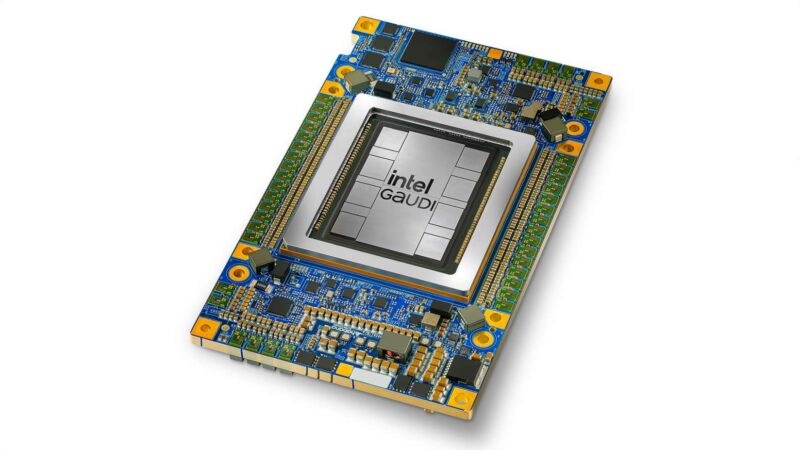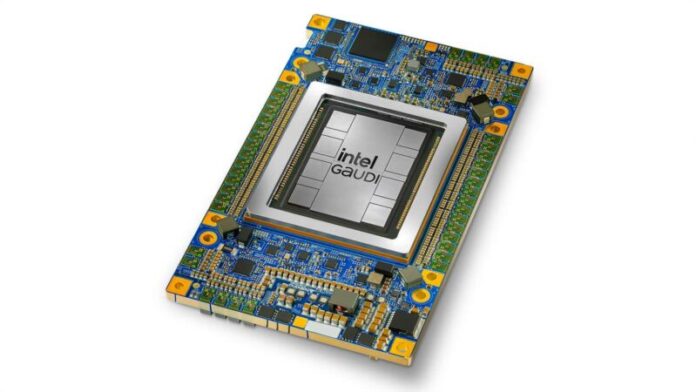
Enlarge / An Intel handout photo of the Gaudi 3 AI accelerator. (credit: Intel)
On Tuesday, Intel revealed a new AI accelerator chip called Gaudi 3 at its Vision 2024 event in Phoenix. With strong claimed performance while running large language models (like those that power ChatGPT), the company has positioned Gaudi 3 as an alternative to Nvidia's H100, a popular data center GPU that has been subject to shortages, though apparently that is easing somewhat.
Compared to Nvidia's H100 chip, Intel projects a 50 percent faster training time on Gaudi 3 for both OpenAI's GPT-3 175B LLM and the 7-billion parameter version of Meta's Llama 2. In terms of inference (running the trained model to get outputs), Intel claims that its new AI chip delivers 50 percent faster performance than H100 for Llama 2 and Falcon 180B, which are both relatively popular open-weights models.
Intel is targeting the H100 because of its high market share, but the chip isn't Nvidia's most powerful AI accelerator chip in the pipeline. Announcements of the H200 and the Blackwell B200 have since surpassed the H100 on paper, but neither of those chips is out yet (the H200 is expected in the second quarter of 2024—basically any day now).
Read 10 remaining paragraphs | Comments
Ars Technica - All contentContinue reading/original-link]




